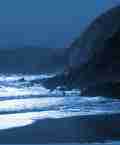 |
Search the site:

|
GEORGE BERNARD SHAW 1856-1950 AUTHOR Shaw was born at 3 Upper Synge Street, Dublin, on 26th July 1856. His mother, a fine mezzo-soprano, left her drunkatd husband to follow her singing teacher to London. In 1876, Shaw gave up his job in an estate agency and joined her. A small legacy enabled him to write five novels over the next few years, but with little success. He was converted to socialism (and vegetarianism) and joined the Fabian Society, forcing himself to become a public speaker. In 1885, a fellow Fabian persuaded The Pall Mall Gazette to employ Shaw as a book reviewer; he also became a notable music critic for The Star. His first play was Widowers' Houses (1892), and thereafter he wrote prolifically. Early plays such as Arms and the Man and Candida displayed intellectual wit, but his first real success was the American run of The Devil's Disciple (1897). In 1898, he married Charlotte Payne-Townshend, a rich Anglo-Irish Fabian who had nursed him through illness. In 1906, they moved to Ayot St Lawrence in Hertfordshire. In 1904, King Edward VII laughed so much at John Bull's Other Island that he broke his seat at the Royal Court Theatre; other triumphs at that London theatre were Man and Superman (1905), Major Barbara (1905) and The Doctor's Dilemma (1906). Shaw's Pygmalion (1914) was destined to have a second success as the musical comedy My Fair Lady. Shaw's popularity suffered when, in a 1914 manifesto, 'Common Sense about the War', he suggested soldiers of every army might be wise to shoot their officers. He opposed the execution of Roger Casement. However, ex-servicemen enjoyed a revival of Arms and the Man in 1919, and he had further successes before receiving the Nobel Prize for Literature in 1925. In old age, Shaw remained a vigorous controversialist. When he died at Ayot St Lawrence on 2 November 1950, the National Gallery of Ireland was among the beneficiaries of his will.
See
From the Appletree Press title: Famous Irish Lives. |
[ Back to Top ]
All Material © 1999-2005 Irelandseye.com and contributors
